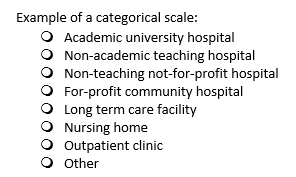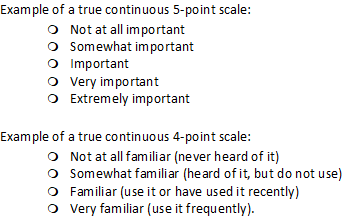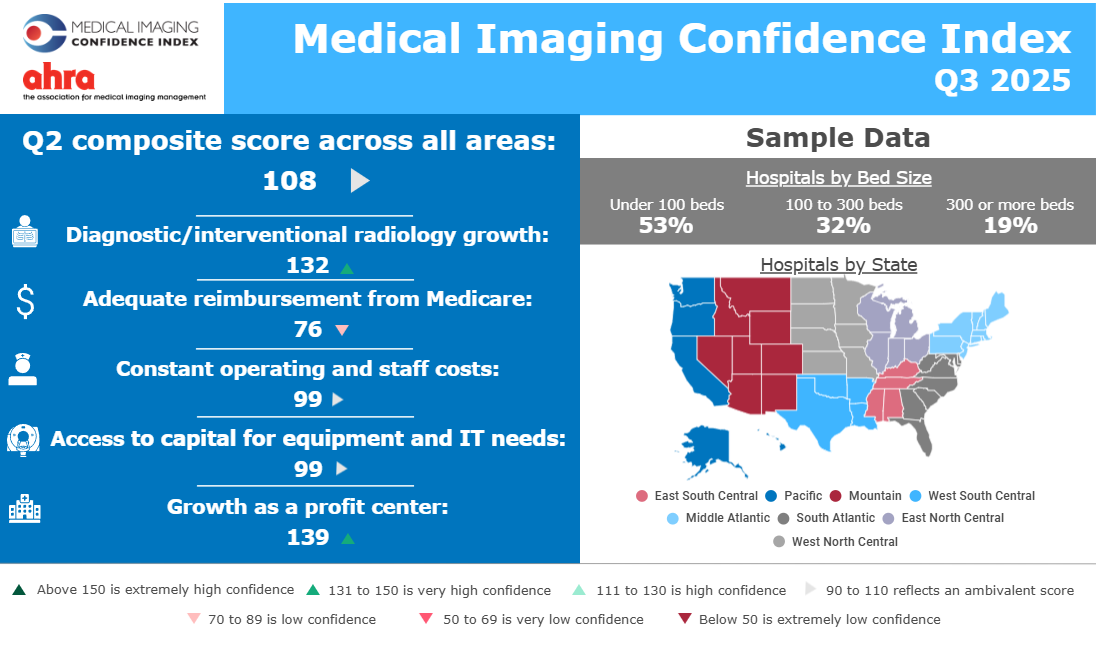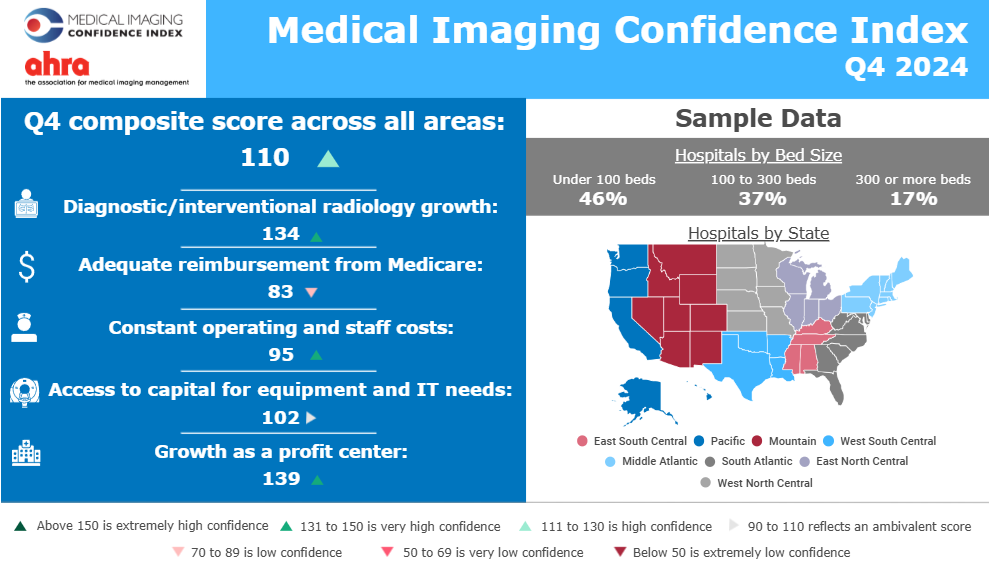SCALES AND MEASUREMENT:
Share this article:
Why do we measure?
Measurement is used to understand how people respond to items (question options) in questions. Often referred to as scales, they can be categorical such as hospital type or gender or on a continuum such as age, year, or with varying degrees of something such as importance, satisfaction, etc.


Continuous Scales
Continuous scales are the cornerstone of all modeling and significance tests. They are sometimes simply numbered 0 to 10 or other times use text as anchors and then assigned numbers to represent each item. Scales should be created such that smaller numbers represent less of something and larger numbers represent more of something. For continuous scales such as importance or satisfaction, TMTG recommends 5-point scales (there are exceptions) with each point anchored along the continuum.
In some cases that might include a neutral point with two negatives and two positives (e.g., an agreement scale). Literature in this area demonstrated that variance does not change whether the scale has 5, 7, or 9 items. Anchoring text with 5 items is generally easy to design, and the scales are easy for respondents to read, comprehend, and complete.Agreement can be a balanced scale with a neutral midpoint.
Seven-point scales are more difficult to anchor and 9-point scales are almost impossible to anchor. Using a 1-10 scale with 10 being most of something is fairly common among people who do not understand measurement. The challenge is determining what some value in between means to each individual. Does a 7 have the same meaning for all respondents? Is a 5 the midpoint (no)? Using text to anchor each option ensures that all respondents see the same thing and are presumably responding in a manner that is consistent with other respondents.
Importance and Familiarity
Importance and familiarity are by definition a true continuum. Some scales have a midpoint that is neutral or ambivalent. However, the aforementioned areas do not. If one is ambivalent about importance then it is not important. Neither can one be ambivalent about familiarity. It is important or not or you are familiar or not; there is no neutral.

A common importance scale is: Not at all important, somewhat important, important, very important, and extremely important. This provides gradations of importance that maximize variance among respondents. Variance is a critical component of advanced data analytical techniques.
Familiarity is often used as a screener question to determine if the correct respondents are qualified to participate or if certain products/brands can be rated as a follow-up. We often use a 4-point scale with additional text such as: Not at all familiar (never heard of it), somewhat familiar (heard of it, but do not use), familiar (use it or have used it recently), very familiar (use it frequently).
Other Scales
The Juster Purchase Probability Scale is used in the extension questions of the Price Sensitivity Meter method (Van Westendorp), and is one of the few examples of anchoring an 11-point scale with both numbers and text descriptions.
The Juster Scale for purchasing intention measurement:
- No chance, almost no chance (1%)
- Very slight possibility (10%)
- Slight possibility (20%)
- Some possibility (30%)
- Fair possibility (40%)
- Fairly good possibility (50%)
- Good possibility (60%)
- Probable (70%)
- Very probably (80%)
- Almost sure (90%)
- Certain, practically certain (99%)
So what?
To ensure quality results it is critical to have consistent measurement as measurement is the foundation of a good analytical plan. There is no statistical technique that can be applied later to make up for a scale that is not measuring what is intended. If you want meaningful results, it starts with proper measurement.
Further details on quantitative methodologies:
Improving Online Survey Efficiency: using conjoint analysis to understand preference for online survey layout




